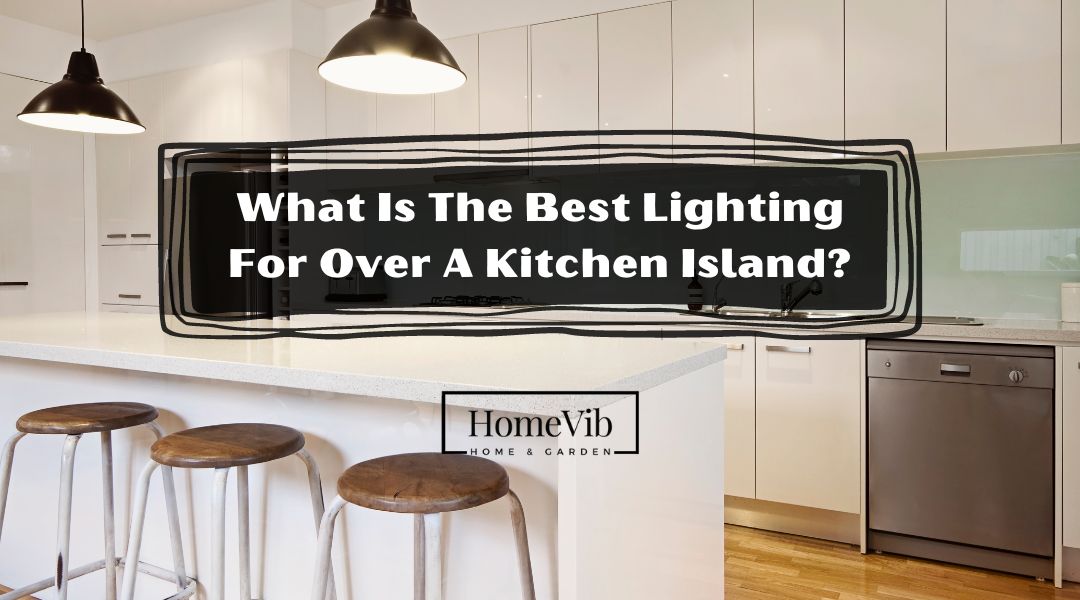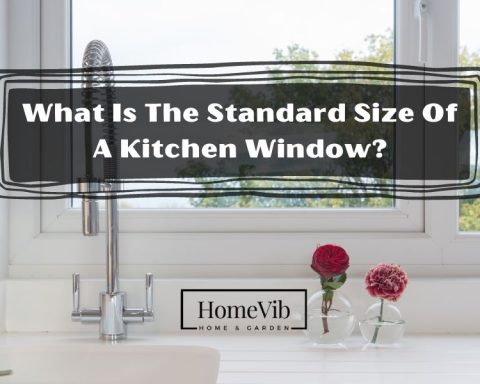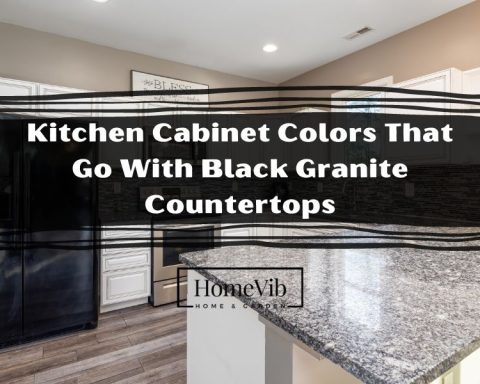Upgrading kitchen lighting is a great method to have a striking visual impact. A kitchen requires several kinds of lighting, but the fixtures over an island tend to stand out the most.
It provides both ambient lighting and task lighting for food preparation and dining.
As you can see, a kitchen island may be the center of attention with well-placed lighting. However, choosing the best option for your space may not be easy.
In this post, we will cover a wide variety of attractive options for kitchen lighting.
Pendant lights are an excellent option for illuminating a kitchen island. The lamps are downwards, providing ample light for work. Recessed lighting is another option. It will help you brighten a room well without blocking any ceiling space.
You can also go for LED spots or downlights. They are the most frequent lighting due to their concentrated beams of light. Generally, these are always ideal for cooking.
What Kind Of Light Goes Over the Kitchen Island?

The lighting over a kitchen island would be ambient to task and accent lighting.
Chandeliers, tube lights, LED downlights, table lamps, and ambient lighting are all prominent. Task lighting is another option. It provides focused lighting for workstations and reading nooks.
If you want to draw attention to a certain area of the room, accent lighting may be the way to go. It highlights artwork and architectural details.
Before we discuss each one, let us determine the meaning and purpose of a kitchen island.
What Is A Kitchen Island?
A kitchen island is a storage unit that can supplement your kitchen’s layout. For more seating or storage, you may place some stools around a kitchen island. This can also serve as a place to keep your appliances out of the way while you cook.
In most cases, cooking and doing the dishes become much less of a chore when you have plenty of counter space. Installing an island is one simple option to get more workspace in the kitchen. Every great kitchen revolves around its island centerpiece.
Ambient Lighting
Ambient lighting, or general lighting, is present throughout a room. Homeowners use it to generate a consistent degree of illumination.
In the kitchen, recessed lights set up in small holes in the ceiling provide ambient lighting. These are flush-mount or semi-flush-mount fixtures that hang from the ceiling.
Usually, it has a small or large gap between the fixture and the ceiling.
It is a type of lighting system where the light bounces off the walls to light up most of the room. Some examples include:
- Chandeliers
- Tube Lights
- LED Downlights
- Table Lamps
Task Lighting
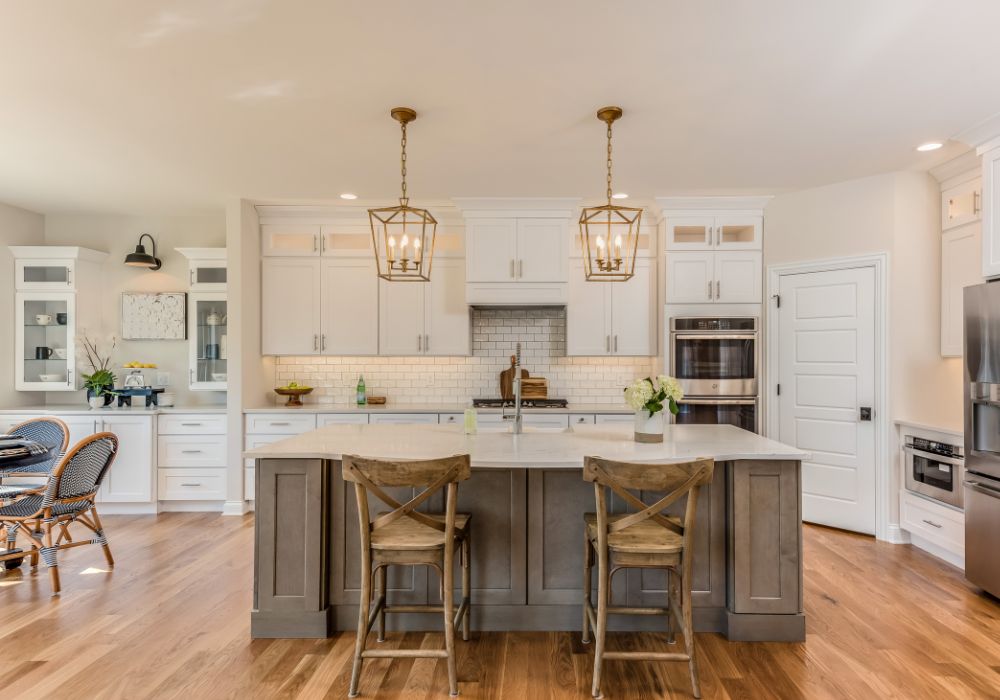
Task lighting refers to a certain style of lighting that offers adequate brightness. These are usually for particular jobs to prevent eye strain. By doing so, there will be less room for error to occur throughout the performance of these tasks.
Some examples of task lights are:
- Pendant Lighting
- Cabinet Lighting
- Desk Lamps
- Recessed Fixtures
Generally, the light levels of task lights are often higher. More often than not, consumers choose whiter, full-spectrum light for improved visibility. Some people believe that cool white provides the most accurate color representation.
You can get economic and financial gains by installing task lights in a kitchen.
Accent Lighting
The purpose of accent lighting is to draw attention to a certain feature of a room. They help make the room seem larger. In most cases, the accent lighting highlights an area rather than the whole room.
These are a few instances where accent lighting would be appropriate:
- Under-Cabinet Lighting
- Sconces
- Picture Lights
- Outdoor Lighting
By using LED strips, you can draw attention to specific kitchen features. It’s a simple way to set the tone of any room, whether you want to go minimalist or use a splash of color.
With cabinets and shelves, accent lighting is especially useful in the kitchen.
What Is the Best Lighting For Over a Kitchen Island?
For the best lighting over a kitchen island, consider using pendant lights. Light is downward from the lamps, making it easy to see what you’re doing.
There’s also the choice of recessed lighting. It’s a great way to light up a room without taking up valuable floor or headroom.
Spotlights and downlights with LED bulbs are other options. The focused beams of light from these fixtures make them the most common. As a rule, these are excellent for the kitchen.
Generally, you must consider the kitchen island design, size, and function. While deciding, think about the roles the island will play.
Pendant Lights
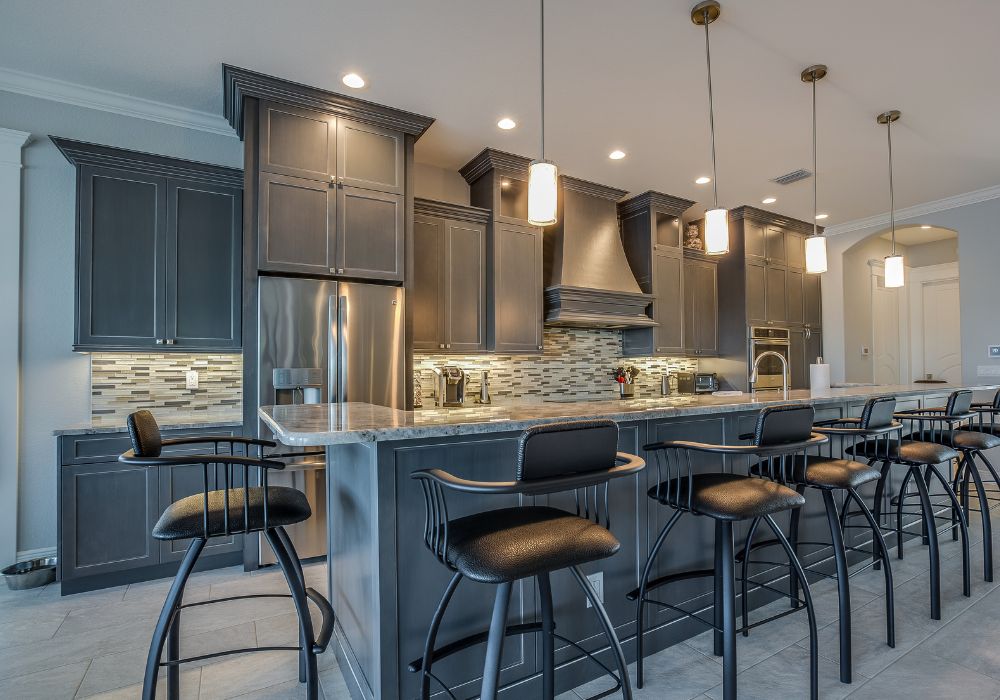
A pendant light is one of the most common lightings for a kitchen island. As you can see, it helps to separate the island from the rest of the room.
The ability to brighten the area around the island is appealing. It creates a warm focal point in the room, which is perfect for entertaining.
Pendant lights have long wires that drop down from the ceiling. It brings the light source down to where it’s needed most.
There are many different forms that these lights can take, from glass globes to solid bell shapes. Because of this, they are compatible with a wide variety of kitchen decor styles.
Recessed Lights
Kitchens also benefit greatly from recessed lighting. Recessed lighting is good for kitchens because it provides strong, focused light.
They are excellent for countertops, islands, and stoves. These are ideal for food preparation, cooking, or creative work.
In addition to pendant lights, you can dim recessed lights to serve as interior decors.
For small kitchens, use two or three-foot spacing between recessed lights. For larger ones, install every four to six square feet of ceiling space that needs a recessed light.
Typically, individual recessed lights aren’t very bright. However, combined, they may illuminate an entire space uniformly and effectively.
LED Downlights
If you’re trying for a minimalist feel in the kitchen, LED downlights are your safest choice. They produce more light per square inch of ceiling space than any other alternative.
LED downlights use far less energy while providing ample, well-balanced illumination. This is because they can produce light from energy.
Certainly, it reduces their heat output and helps keep the atmosphere cooler.
Downlights are one of the most prevalent forms of lighting in today’s homes. They’re well-liked since they’re less invasive than standard light bulbs.
Yet, still producing a comfortable, ambient glow.
Spotlights
Generally, spotlights might not sound like the most glamorous of kitchen lighting ideas. However, they can give job and ambient lighting and deliver full brightness.
If you want to cover form and function, you could always layer your kitchen by using spotlights.
A spotlight aims to highlight its target by shining a concentrated light onto it. They are ideal for a kitchen island when lighting is insufficient.
They function similarly to downlights but are usually put on the surface of a ceiling or wall. They are often attached to a fastening bracket or mounting plate.
How Many Lights Should You Have Over a Kitchen Island?
As a rule of thumb, you can place one light every 30 inches over a kitchen island.
According to this guide, it may seem better and easier to remember when grouped in odd numbers.
Meanwhile, the area of your kitchen island and the amount of lighting are two factors to consider. It might be convenient to install fluorescent lights if the island is bigger. On the other hand, you could install the push type and illuminate as many countertops as you like.
For example, if your island is six feet long, you can position pendant lights out every three feet. Then each centered over a quarter of the area. Let’s take a look at 3 popular kitchen island lengths.
How Many Lights For a 6-foot Kitchen Island?
A 6-foot-tall island isn’t exactly spacious. Using fixtures of that size necessitates the installation of two lights.
In most cases, homeowners use two pendant lights over islands less than 6 feet long. The size of your pendant is another important factor to think about.
For instance, above a 6-foot island, three little lights would work. Two huge pendants (15 to 18 inches in diameter) would be too much.
If you prefer, you can also go for three bulbs. Position one directly over the island and place the other 15″ to 18″ apart.
How Many Lights For an 8-foot Kitchen Island?
Two pendant lights are necessary for an eight-foot island. You can also go with three smaller lights, depending on the size.
No matter how many lights you choose, you must arrange them symmetrically.
Hang your pendant lights at a minimum of 24 inches apart. For example, for an average 8-foot-high room, a chandelier no more than 20 to 24 inches in height is necessary.
Meanwhile, to account for ceilings higher than 8 feet, add 2 inches. Then identify the exact middle of your kitchen counter where you want to hang the kitchen light.
How Many Lights For a 10-foot Kitchen Island?
Over a 10-foot island, you should string three kitchen lights.
Leave a total of 24 inches between the lights. Then hang three light fixtures 12 inches apart from the ceiling’s center.
Leave 8-12 “into end-counter clearance and side-counter clearance. If the counter is 48 inches long and you want to leave 10 inches on each end and side, you’ll only need 28 inches.
Where Should Lights Be Placed Over a Kitchen Island?

As a guideline, hang kitchen lights 30-36 inches from the top of a kitchen island.
Pendant lights look best hung at or below 36 inches from the floor. So if your ceilings are 9 feet or higher, that’s where you should hang them.
Ideally, you should hang kitchen lights low enough to block the light of an overhead bulb. Then high enough to avoid blocking the view. There is no one ideal placement for light in any given space.
For instance, if the diameter of your pendant is 20 inches, you need to put at least 20 inches of gap between each light.
Remember that 18 inches are the minimum between any two light fixtures. So, for 10-inch lighting, the ideal gap is around 18 inches.
What Is The Recommended Height For Hanging Pendant Lights Over A Kitchen Island?
The height for hanging pendant lights over a kitchen island is 30 to 36 inches. Remember that the spacing should be between the island’s top and the fixture’s bottom.
At the very least, the pendant’s bottom should be dangling 75–90cm/30–30.5″ above the island’s surface. The ideal height for a pendant lamp, measured from the floor to its base, is 72 inches.
When hanging lights, leave an even distance between each pendant. This is necessary to maintain good proportions. Narrower spaces between fixtures are feasible with smaller diameters.
You probably don’t want your guests standing around the island to stare into a direct light.
How Big Should Pendant Lights Be Over a Kitchen Island?
Ensure that your pendants’ overall width and diameter do not exceed 24 inches.
You may get the optimal maximum size by taking 12 inches from the width of your island (if it’s 36 inches wide).
For illustration purposes, let’s say that the width of your island is 42 inches. Get the optimal breadth or diameter for the lights to go over by subtracting 12.
That’s equivalent to a measurement of 30 inches. Therefore, a larger size of the pendant light would be appropriate.

